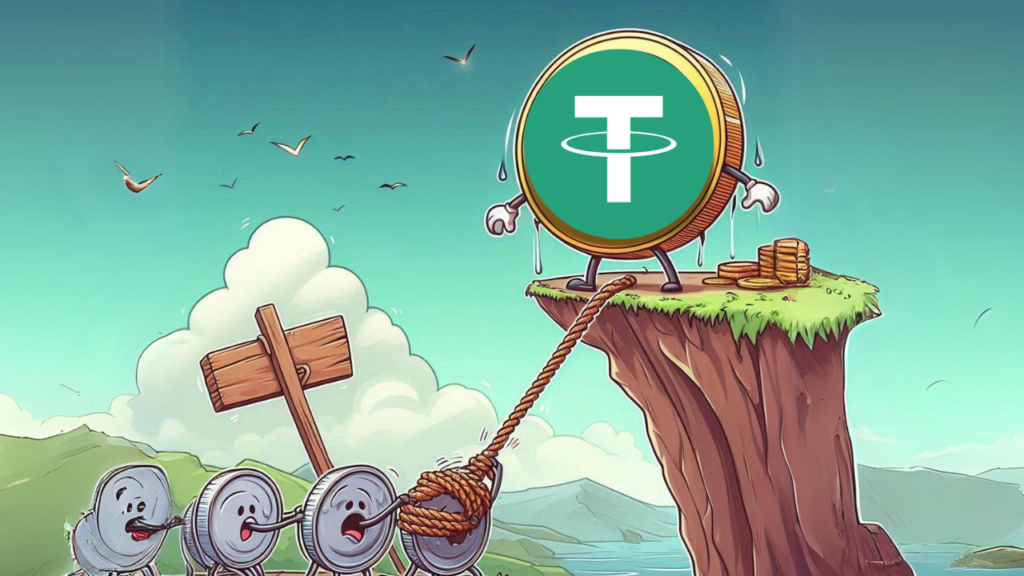The Potential Threat to USDT: Understanding the Impact of MiCA Regulations

Tether (USDT), one of the most popular stablecoins in the crypto world, is facing a significant threat due to the European MiCA (Markets in Crypto Assets) regulations. These new rules could have a serious impact on Tether’s operations in Europe. Paolo Ardoino, CEO of Tether and CTO of Bitfinex, explains that MiCA imposes strict limits on the volume and issuance of stablecoins, as well as requiring that 60% of stablecoin reserves be held in cash deposits within banks. The problem arises from the fact that these cash deposits are uninsured over €100,000, potentially leading to massive bank runs and instability for both stablecoins and traditional banks.
A Symptom of Failing National Economies
In an interview with Cointelegraph, Ardoino expressed his views on the matter, stating that the success of USDT exposes the shortcomings of many national economies. Tether provides people with an alternative during times of economic struggle. For instance, in Japan, where the stock market is plummeting and the yen is unstable due to excessive money printing by governments and central banks, more individuals are turning to crypto and stablecoins like USDT.
Tether’s Strategy and Compliance Efforts
Despite the challenges posed by the new regulations, Tether is actively engaging with European regulators to address these issues. Ardoino highlighted that Tether is not alone in confronting these hurdles; even its main competitors are grappling with similar concerns. Ardoino remains optimistic that through ongoing discussions, a regulatory framework that is both secure and practical can be established. Additionally, Tether plans to expand its team to 200 employees by mid-next year, with a primary focus on bolstering its compliance department. This expansion underscores the company’s commitment to addressing any illicit activities involving its stablecoin.
Achievements and Future Prospects
Despite the obstacles, Tether has made significant strides. USDT recently reached a milestone by surpassing $115 billion in circulation supply, with its market cap increasing by over $1 billion in the previous week. Concurrently, $1.3 billion worth of USDT was transferred to major exchanges like Kraken, OKX, and Coinbase during the same period. This surge solidifies USDT’s position as a dominant player in the stablecoin market, commanding about 70% of the market share.
As per Tether’s transparency page, over 50% of its supply is on Tron, while around 41% is on Ethereum. In the first half of 2024, Tether reported record profits of $5.2 billion, a noteworthy achievement given its comparatively smaller workforce compared to other tech and crypto giants.
Tether is actively promoting blockchain education by partnering with the Africa Blockchain Institute to educate students at five universities in the Ivory Coast about blockchain technology, cryptocurrencies, smart contracts, DeFi, and industry applications.
Conclusion: Facing Challenges and Celebrating Wins
The stringent MiCA regulations present significant challenges for Tether and the stablecoin market, particularly concerning reserve requirements that could elevate risks and impact USDT’s future in Europe. Nevertheless, Tether’s resilience and commitment to progress are evident through its accomplishments. As the crypto landscape evolves, maintaining open communication between companies and regulators is crucial. Observing how Tether navigates these regulatory hurdles will be pivotal for stakeholders in the crypto sphere.
Also Read: Gemini and Coinbase Clash with CFTC Over 2024 Presidential Betting Ban!
Source link
#USDT #Danger #Impact #MiCA #Regulations




